Gurunsi architecture in Burkina Faso and Ghana
Gurunsi architecture in Burkina Faso and Ghana
Kassena architecture

The roofs are for storage of food and for sleeping during the dry season.
Tiebele, Burkina Faso
photographed by Margaret Courtney-Clark
Tiebele, Burkina Faso
photographed by Margaret Courtney-Clark
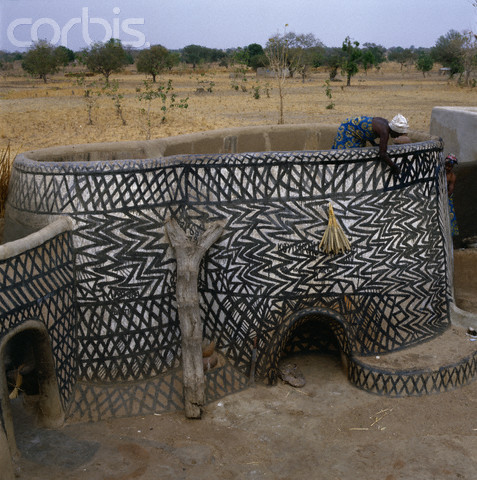
Kassena compound, Donnawanu family’s home
Navrongo-Saboro, Ghana
photographed by Margaret Courtney-Clark
Navrongo-Saboro, Ghana
photographed by Margaret Courtney-Clark

Kassena architecture
Navrongo-Saboro, Ghana
photographed by Margaret Courtney-Clark
Navrongo-Saboro, Ghana
photographed by Margaret Courtney-Clark
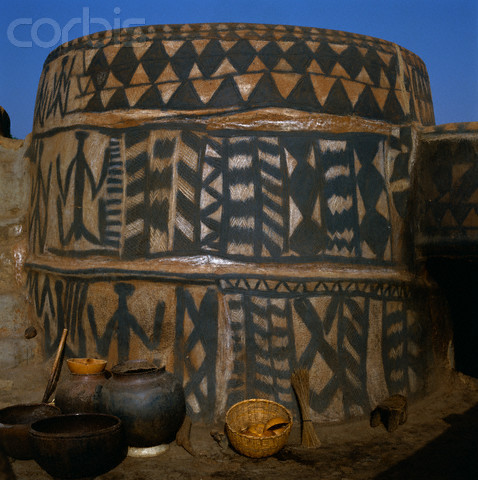
Kassena, Tiebele
Nankani architecture
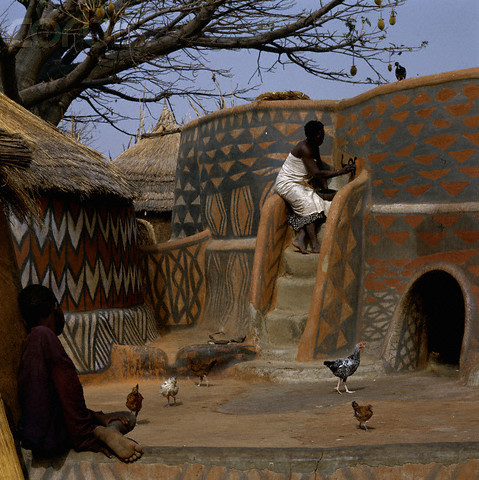
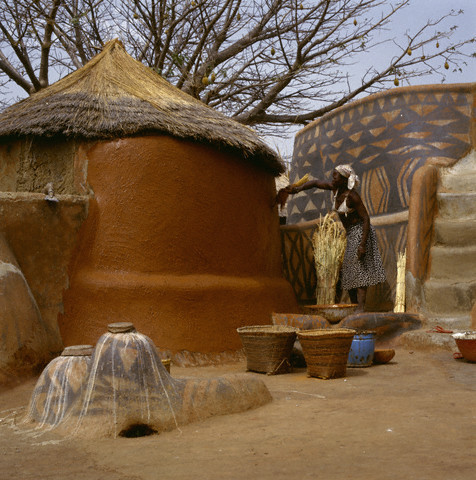

Nankani architecture

Nankani architecture
Biloa Wenna paints her home
Zecco, Burkina Faso
photographed by Margaret Courtney-Clark
Biloa Wenna paints her home
Zecco, Burkina Faso
photographed by Margaret Courtney-Clark

Nankani architecture
Burkina Faso
photographed by Margaret Courtney-Clark
Burkina Faso
photographed by Margaret Courtney-Clark

Nankani home
Burkina Faso
photographed by Margaret Courtney-Clark
Soninke Architecture
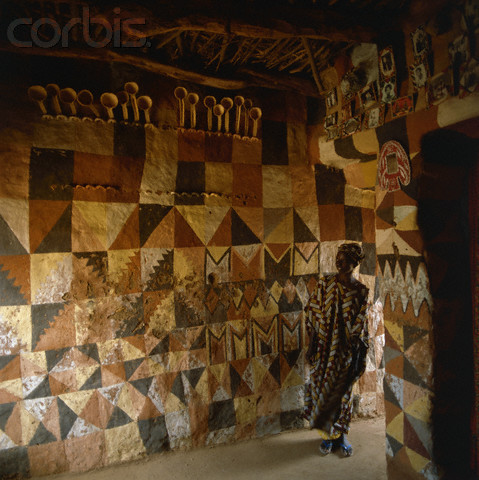
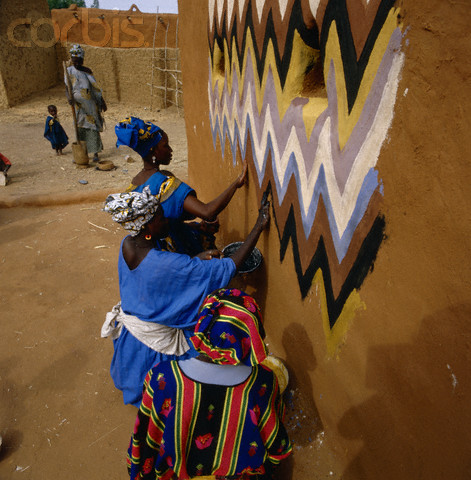
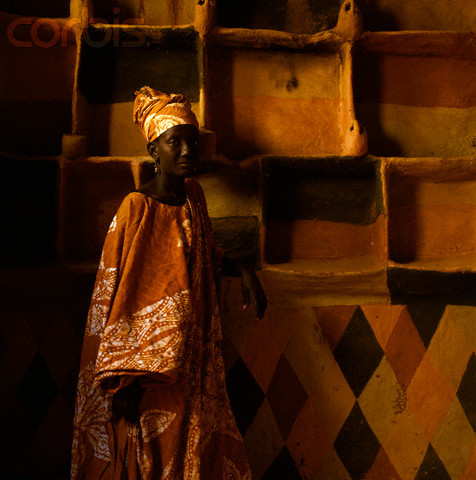
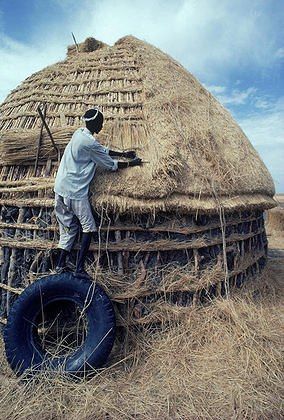
Dinka man stands on an old truck tire to thatch his roof near Malakal in southern Sudan.
Zulu Architecture
Zulu House. South Africa
Yoruba
Below is Osun Osogbo Sacred Grove, a UNESCO World Heritage Site located in Osogbo. The place is a a must visit for anyone interested in Nigerian art and culture. You can read more about here on the UNESCO website here
Sudano-Sahelian


Difference between Savannah and Sahelian styles
Substyles
Notes
Further reading

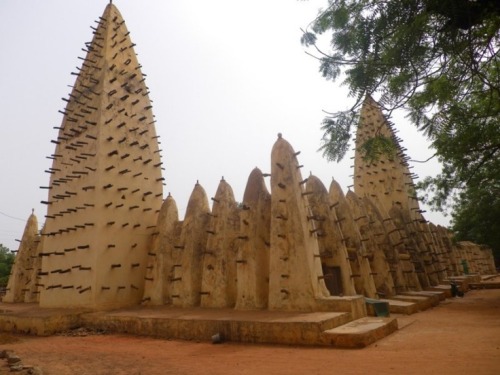
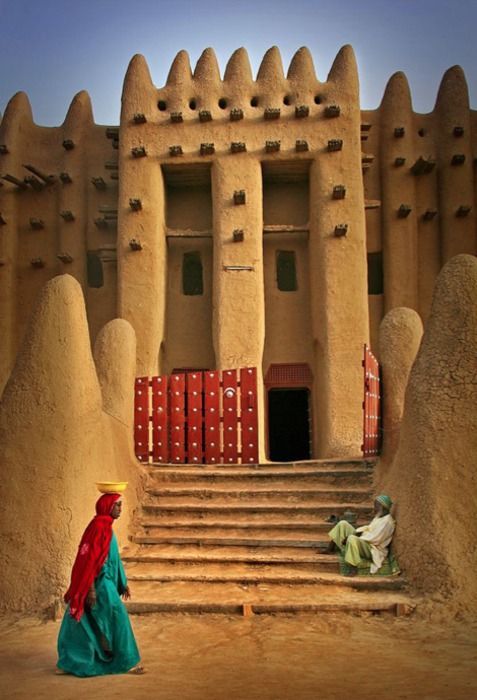
Burkina Faso
photographed by Margaret Courtney-Clark
Soninke Architecture

Soninke home
Ouloumbini, Mauritania
photographed by Margaret Courtney-Clark
Ouloumbini, Mauritania
photographed by Margaret Courtney-Clark

Soninke, Mauritania

Shelves made by Khoumba Camara
Soninke, Ouloumbini, Mauritania
Photographed by Margaret Courtney-Clark
Dinka Architecture
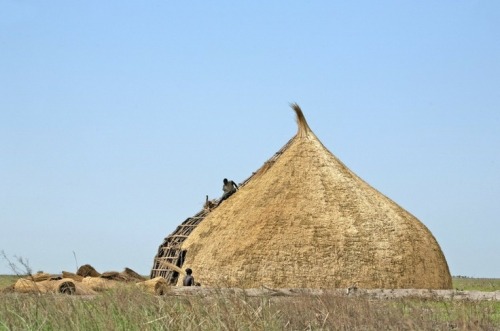
Dinka Luak to house cattle. Southern Sudan
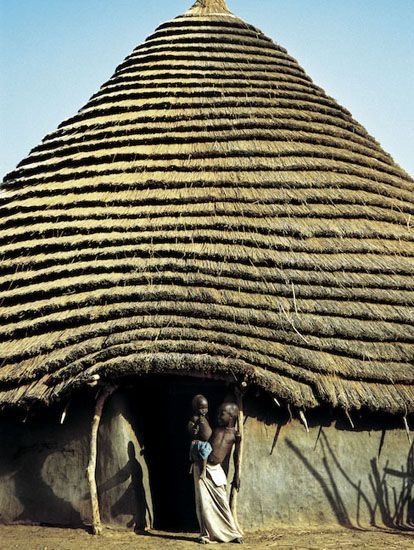
Soninke, Ouloumbini, Mauritania
Photographed by Margaret Courtney-Clark
Dinka Architecture

Dinka Luak to house cattle. Southern Sudan

Dinka

Dinka man stands on an old truck tire to thatch his roof near Malakal in southern Sudan.
Zulu Architecture
Zulu House. South Africa
Yoruba
Below is Osun Osogbo Sacred Grove, a UNESCO World Heritage Site located in Osogbo. The place is a a must visit for anyone interested in Nigerian art and culture. You can read more about here on the UNESCO website here
Sudano-Sahelian
Sudano-Sahelian or Sudanese architecture are terms used to describe a
specific type of architecture that was developed in West Africa with the
oldest examples in Mali. i’m not sure if calling this architecture
Sundanese and not Malian is a way of erasing West African influences on
architecture. btw this is not referring to all Malian and Sahelian and
Sudanese architecture, but a specific style of mudbrick architecture
characterized by wooden support beams that stick out from the wall face.


View in High-Res
Mio - 1993 (c)
Kougkoun - 1993 (c)
Segou - 1984 (c)
Segou Sikoro : mosque/mosquée Ba Sounou Sacko - 1986 (x)
The Sudano-Sahelian architecture (also Sudanese) covers an umbrella of similar indigenous architectural styles common to the African peoples of the Sahel and Sudanian grassland (geographical) regions of West Africa, south of the Sahara, but above fertile forest regions of the coast. This style is characterized by the use of mudbricks and an adobe plaster, with large wooden-log support beams that
jut out from the wall face for large buildings such as mosques or
palaces. These beams also act as scaffolding for reworking, which is
done at regular intervals, and involves the local community. The
earliest examples of Sudano-Sahelian style likely comes from Jenné-Jeno around 250 BC, where the first evidence of permanent mudbrick architecture in the region is attested.[1]
Difference between Savannah and Sahelian styles
The earthen architecture in the Sahel zone region is noticeably different from the building style in the neighboring savannah.
The “old Sudanese” cultivators of the savannah built their compounds
out of several cone-roofed houses. This was primarily an urban building
style, associated with centres of trade and wealth, characterised by
cubic buildings with terraced roofs comprise the typical style. They
lend a characteristic appearance to the close-built villages and cities.
Large buildings such as mosques, representative residential and youth
houses stand out in the distance. They are landmarks in a flat landscape
that point to a complex society of farmers, craftsmen and merchants
with a religious and political upper class. With the expansion of
Sahelian kingdoms south to the rural areas in the savannas (inhabited by
culturally or ethnically similar groups to those in the Sahel), the
Sudano-Sahelian style was reserved for mosques, palaces, the houses of
nobility or townsfolk (as is evident in the Gur-Voltaic style), whereas
among commonfolk, there was a mix between either typically distinct
Sudano-Sahelian styles for wealthier families, and older African
roundhut styles for rural villages and family compounds.
Substyles
The
Sudano-Sahelian architectural style itself can be broken down in to
four smaller sub-styles that are typical of different ethnic groups in
the region. The examples used here illustrate the construction of
mosques as well as palaces, as the architectural style is concentrated
around inland Muslim populations.
As with the people, many of these styles cross-pollinate and produce
buildings with shared features. Any one of these styles is not exclusive
to one particular modern countries borders, but are linked to the
ethnicity of its builders or surrounding populations. For example, a
Malian migrant community in traditionally Gur area may build in the
style characteristic of their ancestral homeland, while neighbouring Gur
buildings are built in the local style. These styles include:
- Malian - of the various Manden groups of southern and central Mali. Characterized by the Great Mosque of Djenne and the Kani-Kombole Mosque of Mali.
- Fortress style - predominantly used by the Zarma peoples of northern Nigeria and Niger, Hausa-Fulani and Tuareg mixed communities in Agadez, the Kanuri people of Lake Chad, andSonghai of northeastern Mali. Military aspect to construction of high protective compound walls built around a central courtyard. Minaret is the only structure with support beams showing. Characterized by the Sankore Mosque of Timbuktu, the tomb of Askia in Gao Mali, and the Agadez mosque of northern Niger.
- Tubali - The characteristic Hausa architectural style predominant in North and Northwestern Nigeria, Niger, Eastern Burkina Faso, Northern Benin, and Hausa-predominant zango districts and neighbourhoods throughout West Africa. Characterised by its attention of stucco detail in abstract design and extensive use of parapets. One to two storey buildings. Examples in the architecture of the Yamma Mosque and old town of Zinder, The Hausa quarter of Agadez Niger, the Gidan Rumfa of Kano, and various Hausa districts across West Africa.
- Volta basin - - of the Gur and Manden groups of Burkina Faso, northern Ghana and northern Cote d'Ivoire. The most conservative of the three styles. A single courtyard, characterized by high white and black painted walls, inward curved turrets supporting an exterior wall, and a larger turret nearer the center. Characterized by the Larabanga mosque of Ghana and the Bobo-Dioulasso Grand Mosque.
Notes
- Jump up^ Brass, Mike (1998), The Antiquity of Man: East & West African complex societies
Further reading
- Aradeon, Suzan B. (1989), “Al-Sahili: the historian’s myth of architectural technology transfer from North Africa”, Journal des Africanistes 59: 99–131, doi:10.3406/jafr.1989.2279.
- Bourgeois, Jean-Louis; Pelos, Carollee (photographer); Davidson, Basil (historical essay) (1989), Spectacular vernacular : the adobe tradition, New York: Aperture Foundation, ISBN 0-89381-391-5. Second edition published in 1996.
- Prussin, Labelle (1986), Hatumere: Islamic design in West Africa, Berkeley: University of California Press, ISBN 0-520-03004-4.
- Schutyser, S. (photographer); Dethier, J.; Gruner, D. (2003), Banco, Adobe Mosques of the Inner Niger Delta, Milan: 5 Continents Editions, ISBN 88-7439-051-3.
image credits:
- from [1] JCarriker (304322 bytes) (used with the permission of Andy Gilham of www.andygilham.com CC BY-SA 3.0
Agadez Grand Mosque, Niger (Fortress style) by - Flickr This image, which was originally posted to Flickr.com, was uploaded to Commons using Flickr upload bot on 17:27, 20 December 2007 (UTC) by AxelBoldt (talk). This file is licensed under the Creative Commons Attribution-Share Alike 2.0 Generic license.
Larabanga Mosque, Ghana (Gur-Voltaic) by - Own work CC BY-SA 3.0
An ancestral Hausa multi-storey townhouse exhibiting the Tubali/Hausa architectural style, Agadez, central Niger by - Flickr This image, which was originally posted to Flickr.com, was uploaded to Commons using Flickr upload bot on 17:46, 20 December 2007 (UTC) by AxelBoldt (talk). This file is licensed under the Creative Commons Attribution-Share Alike 2.0 Generic license.
Historic mosque of Kong, now in Cote d'Ivoire, 1892 by - New York Public Library, [1], from Du Niger au Golfe de Guinée par le pays de Kong et le Mossi, par le capitaine Binger (1887-1889)
Sudano-Sahelian ArchitectureIndigenous architectural style common to Islamized West AfricaDogon Country, Mali
A people without the knowledge of their past history, origin and culture is like a tree without roots."
The University of Sankoré, or Sankore Masjid is one of three ancient centers of learning located in Timbuktu, Mali, West Africa. The three mosques of Sankoré, Djinguereber Mosque and Sidi Yahya compose the famous University of Timbuktu. During the 14th -16th century, Sankore University enrolled more foreign students than New York University today.
The Mali Empire gained direct control over the city of Timbuktu in 1324 during the reign of Mansa Kankou Musa also known as Musa I “King of Kings”. He designed and saw the construction of one of Sankore’s first great mosques and the Jingeray Ber Masjid in 1327.The foundations of the previous structure were laid around 988 A.D. on the orders of the city’s chief judge Al-Qadi Aqib ibn Mahmud ibn Umar. A local mandinka lady, esteemed for her wealth, financed his plans to turn Sankoré into a world class learning institution.
By the end of Mansa Musa’s reign (early 14th century CE), the Sankoré Masjid had been converted into a fully staffed Madrassa (Islamic school or in this case university) with the largest collections of books in Africa since the Library of Alexandria. The level of learning at Timbuktu’s Sankoré University was superior to that of all other Islamic centers in the world. The Sankoré Masjid was capable of housing 25,000 students and had one of the largest libraries in the world with between 400,000 to 700,000 manuscripts.

Today, the intellectual legacy of Timbuktu is neglected in historical
discourse. These pages of WORLD history tend to get ripped out.
Zaria, Nigeria
The Djenné Mosque
an example of Sudanese architecture in Mali
View in High-Res
Mosque in Burkina Faso
an example of Sudanese architecture in Mali
View in High-Res
Mosque in Burkina Faso

View in High-Res
Mosque in Mali











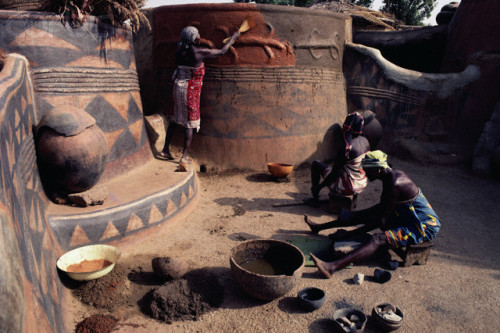



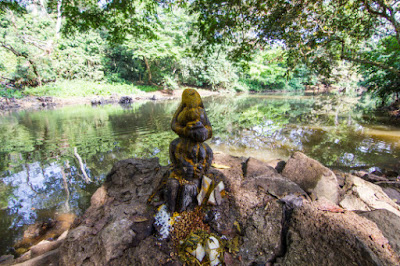







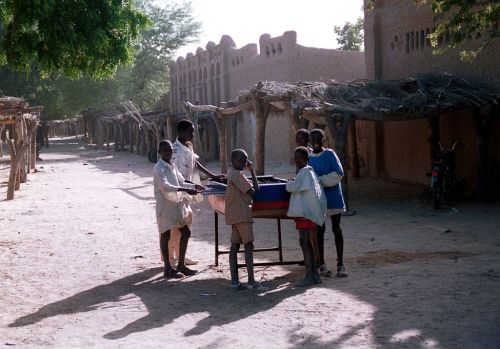
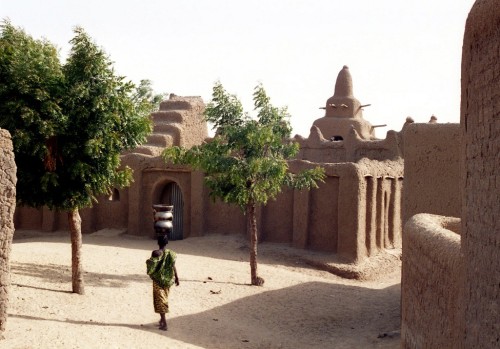



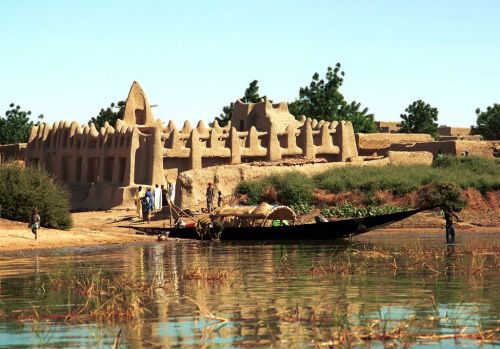
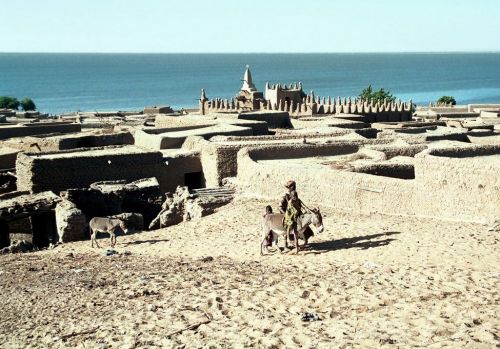



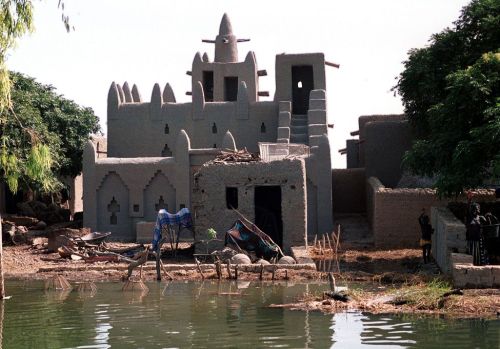

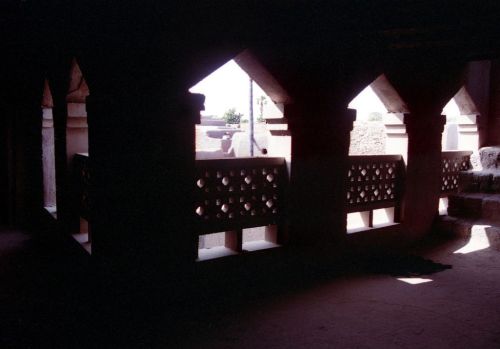
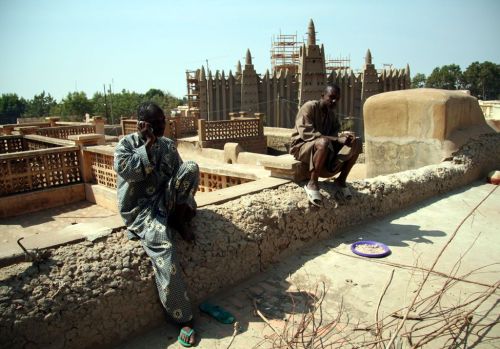




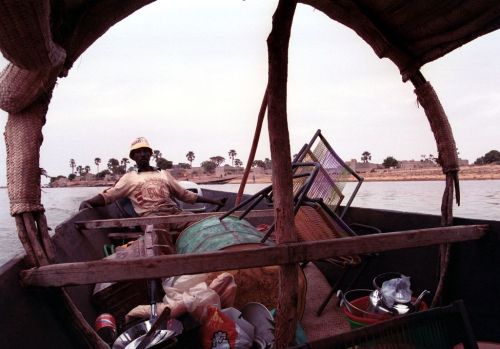







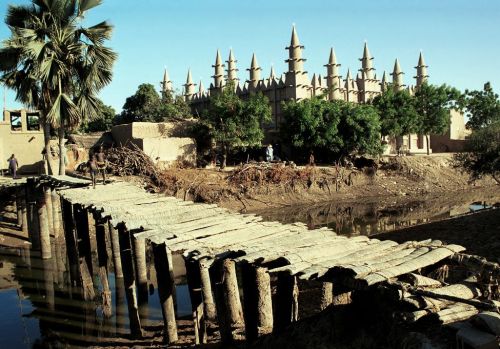



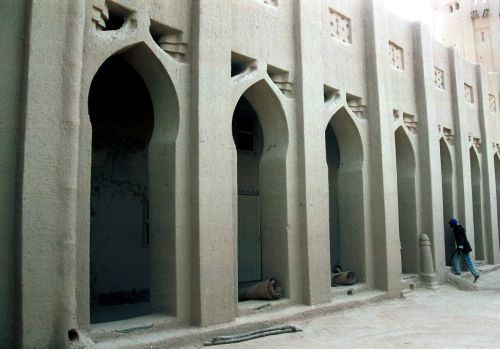
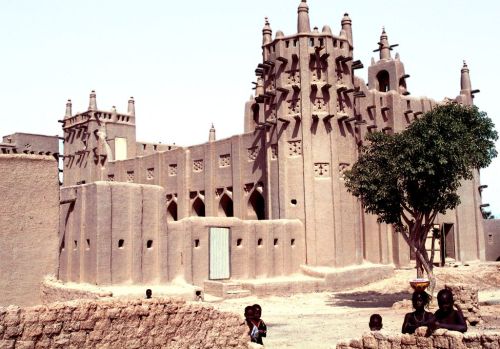












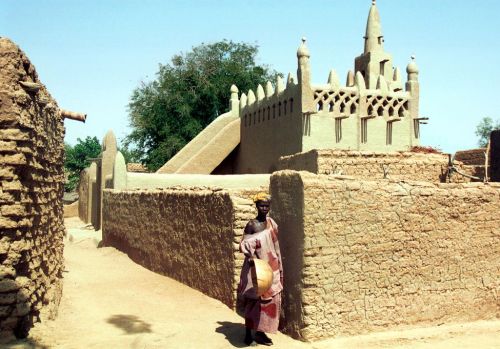

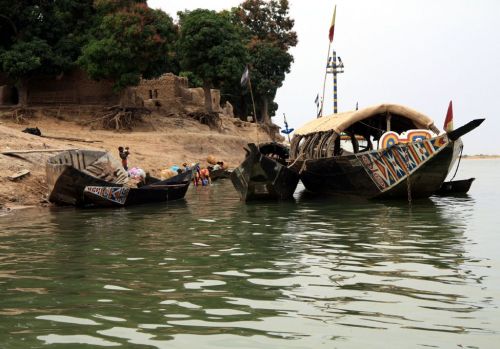


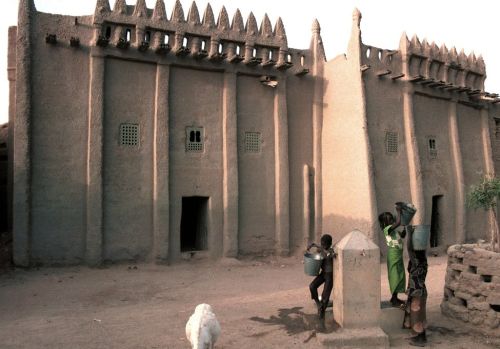
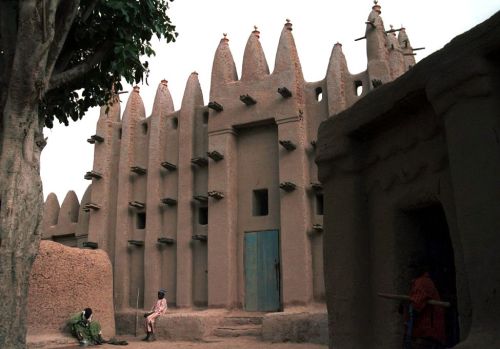






















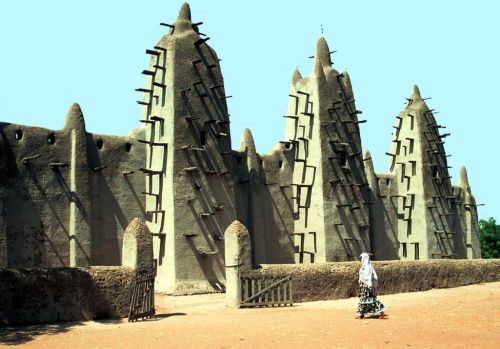

















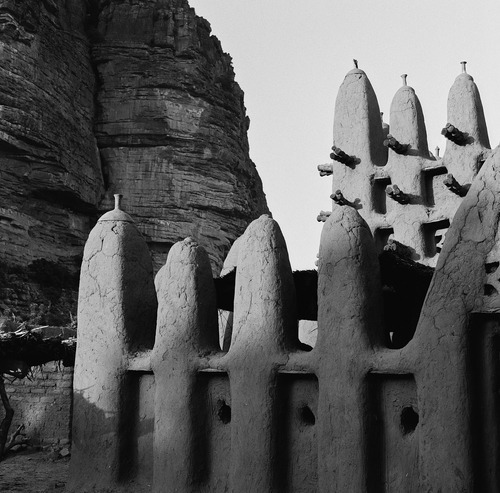
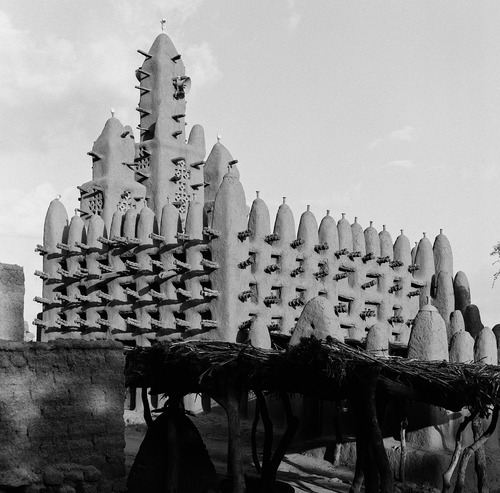
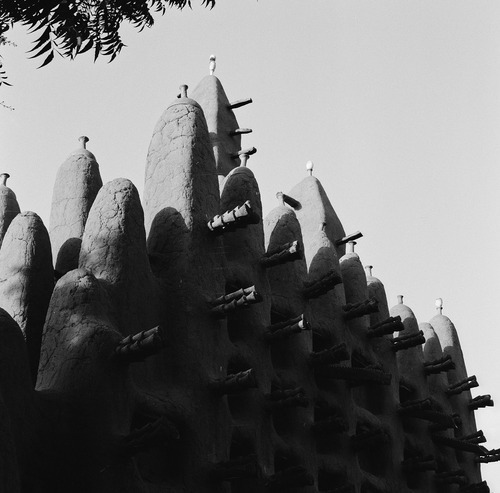







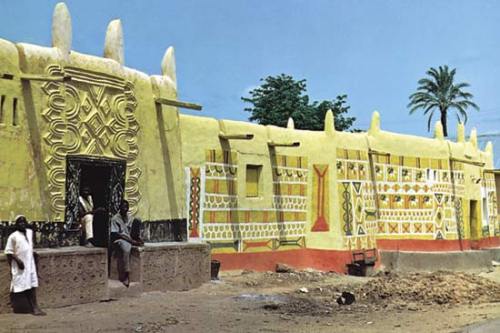
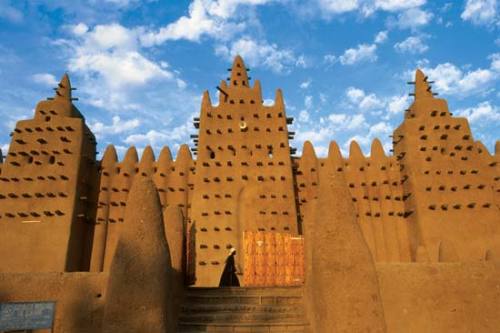
Amazing, not boring or plain! Id love to go to Africa some day.
ReplyDelete